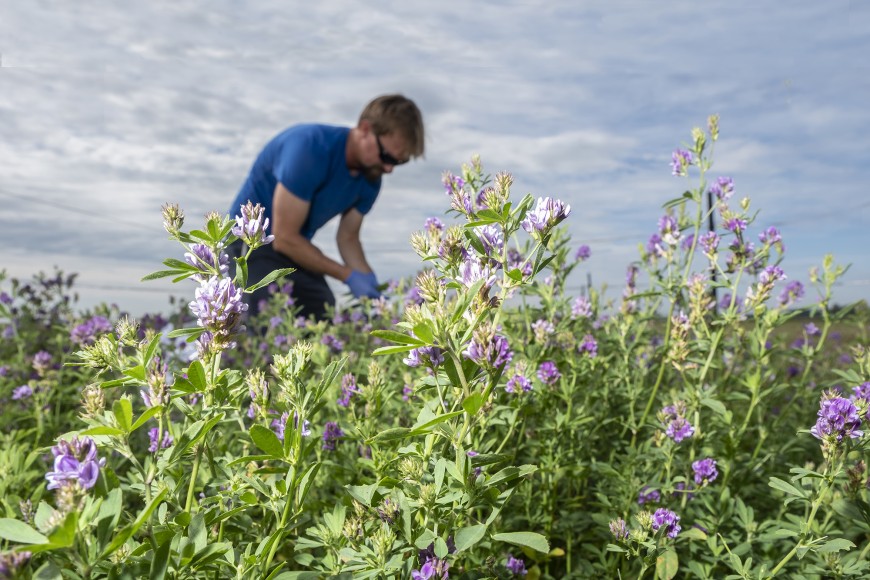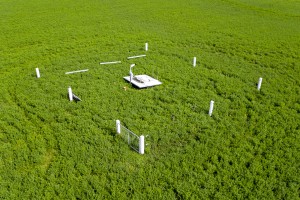
Dr Scott Graham in a lucerne crop at Ashley Dene.
Lucerne has been used extensively as forage for dryland sheep and beef farms in New Zealand, but few measurements of leaching losses from lucerne have been made, leaving a knowledge gap about whether its use in intensive, irrigated systems could reduce N leaching via extraction of water and nutrients at depth.
This knowledge is important because the irrigated land area of New Zealand has increased by more than 90% over the past 15 years, to nearly 800,000 hectares, primarily to support dairy farming expansion. The intensification of land use associated with irrigation has been most pronounced in the Canterbury region, where shallow, stony soils are prone to nitrate leaching losses. Nitrate leaching for the region is estimated to have doubled between 1990 and 2011.
As part of the MBIE Endeavour programme Reducing nitrogen losses from farms, Manaaki Whenua’s Dr Scott Graham and colleagues aimed to quantify losses of N through leaching and crop harvest for lucerne on stony alluvial soils in two paddocks under different irrigation, effluent, and grazing management: one non-irrigated and one irrigated with water and effluent.
The study ran for three full growing seasons. It used six large lysimeters at the Ashley Dene Research Station, Lincoln University, for the soil drainage and leaching aspects of the study, and effluent and water inputs from the pivot irrigator were carefully monitored. The fields were initially mechanically harvested for cut-and-carry feed but grazing with animals was slowly integrated into paddock management over the study period. Lucerne within the fenced-off lysimeters was managed to match grazing impacts in the surrounding paddocks.
Using stable isotopic analysis of the N in lucerne biomass, the researchers were able to differentiate between N fixed by the lucerne from soil N, effluent or animal dung and urine sources. This information, along with chemical analysis of the lysimeter leachate, allowed for quantification of the fate of each type of N – whether it was leached out or retained in the soil or the crop.
The study showed that the amount of N leached from irrigated and effluent-treated lucerne each year was from 1.5 to nearly 15 times greater than that from non-irrigated lucerne. N fixed by the lucerne was much less prone to leaching than N from the grazing animals and from the effluent. The progressive change from cut-and-carry to grazing of lucerne also resulted in 3 times more N leached. Surprisingly, a summer rain event that led to soil drainage outside the normal winter leaching season at the irrigated site contributed more to N leaching than the typical winter leaching losses.
This work has important implications for farm management. First, planting lucerne is not an effective strategy for mitigating N leaching losses. The researchers also recommend irrigation practices that maintain a soil water deficit would limit additional soil drainage and leaching as a result of irrigation, particularly for summer rainfall events that contribute to high leaching losses.


